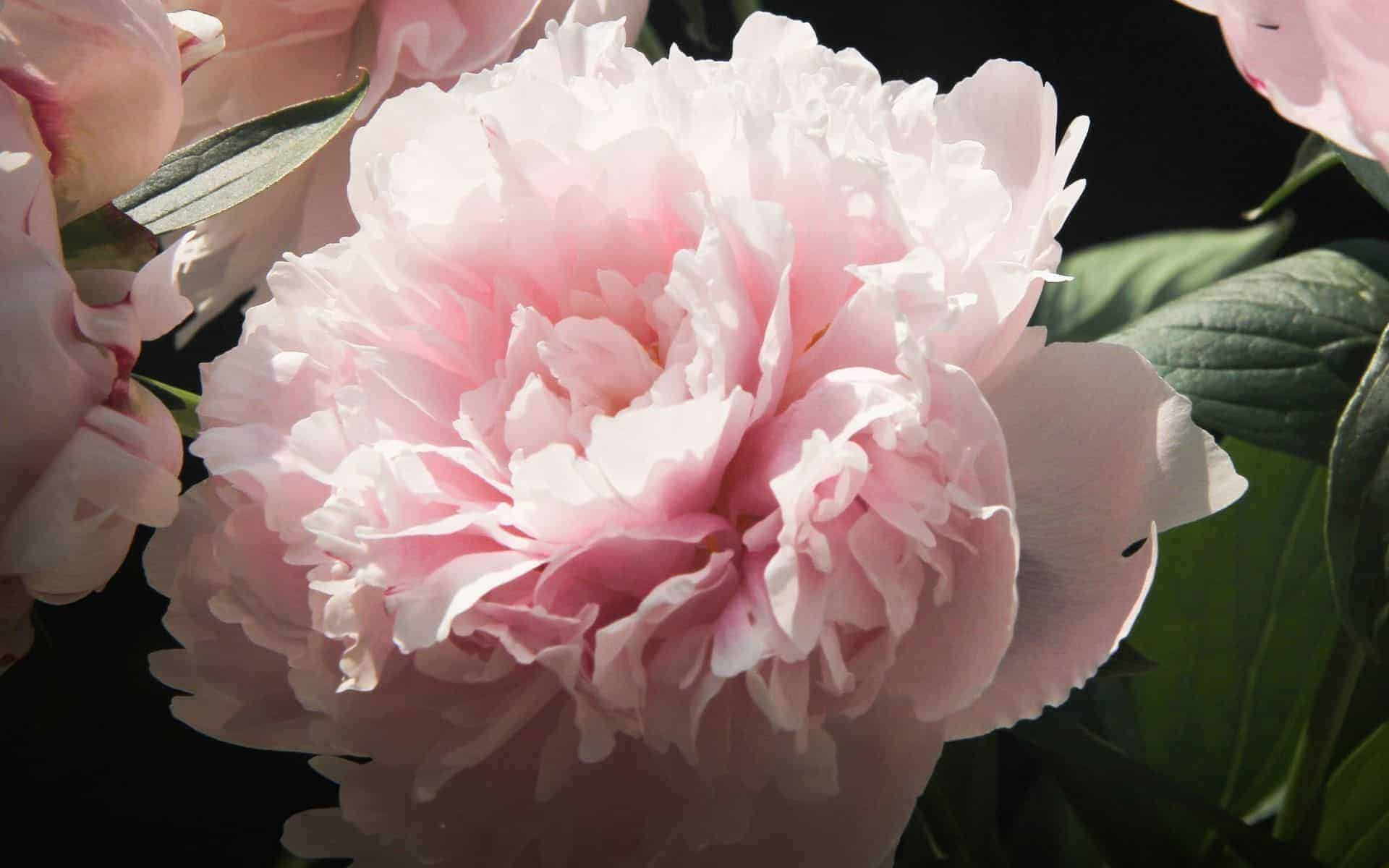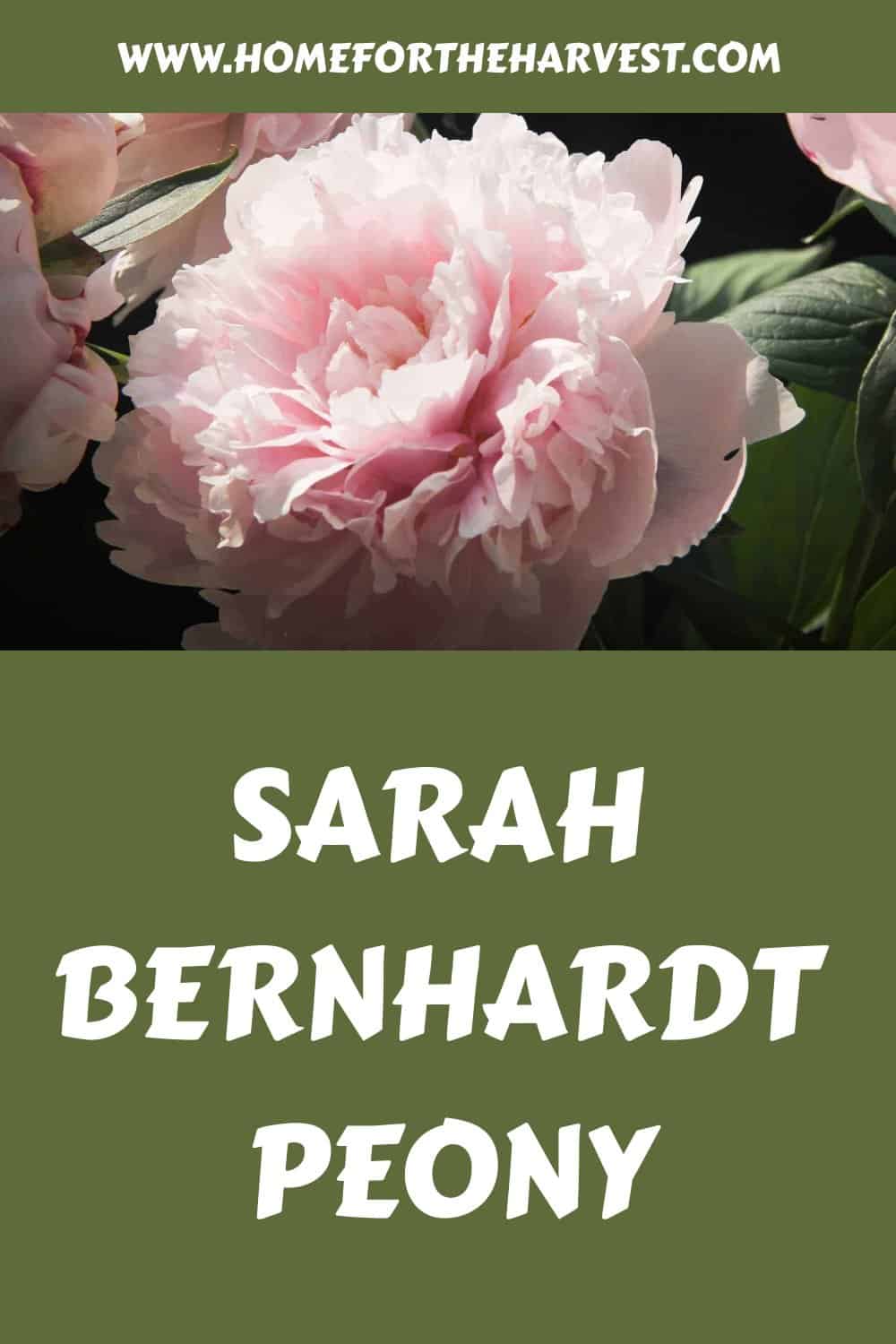The Sarah Bernhardt peony is a large, delightfully fragrant, double-bloom variety with soft rose-pink petals. These low-maintenance herbaceous peonies bloom best when grown in full sun and well-drained soil, giving the peony roots access to plenty of moisture. Sarah Bernhardt peonies are a cultivar of Paeonia lactiflora bred in France by Victor Lemoine in the late 1800s.
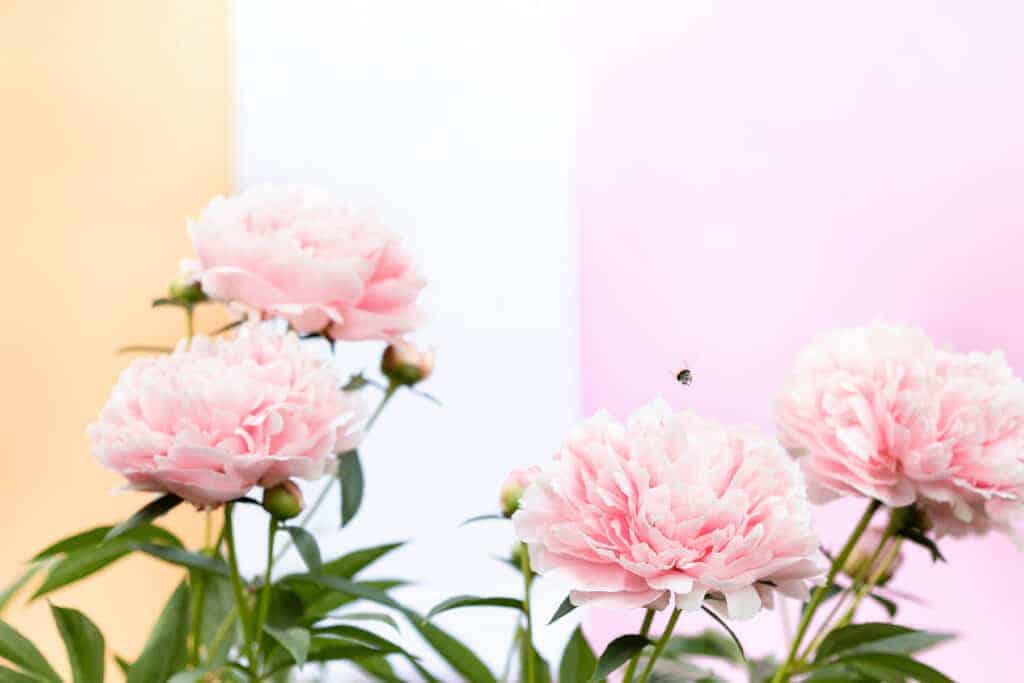
Sarah Bernhardt peony basics
Sarah Bernhardt peonies are named after a famous French actress of the same name. Sarah Bernhardt was a stage actress who acted in the plays of both Alexander Dumas and Victor Hugo, and she was the first famous actress to act in films.
The breeder of this particular cultivar, Monsieur Victor Lemoine, was a contemporary of Bernhardt’s in France, which is likely why he chose to use her name. Undoubtedly, these flowers share the same spirit of showmanship.

Mr. Lemoine likely introduced the Sarah Bernhardt peony in the late 1800s or early 1900s. This peony was awarded the RHS Award of Garden Merit in 1993.
Sarah Bernhardt peonies remain one of the most popular peonies to grow in the garden, even well over a hundred years after its introduction.
This type is an excellent example of a “double” peony – a type bred to have bodacious multiple layers of petals. Other popular double peonies include the Festiva Maxima peony and the Shirley Temple peony.
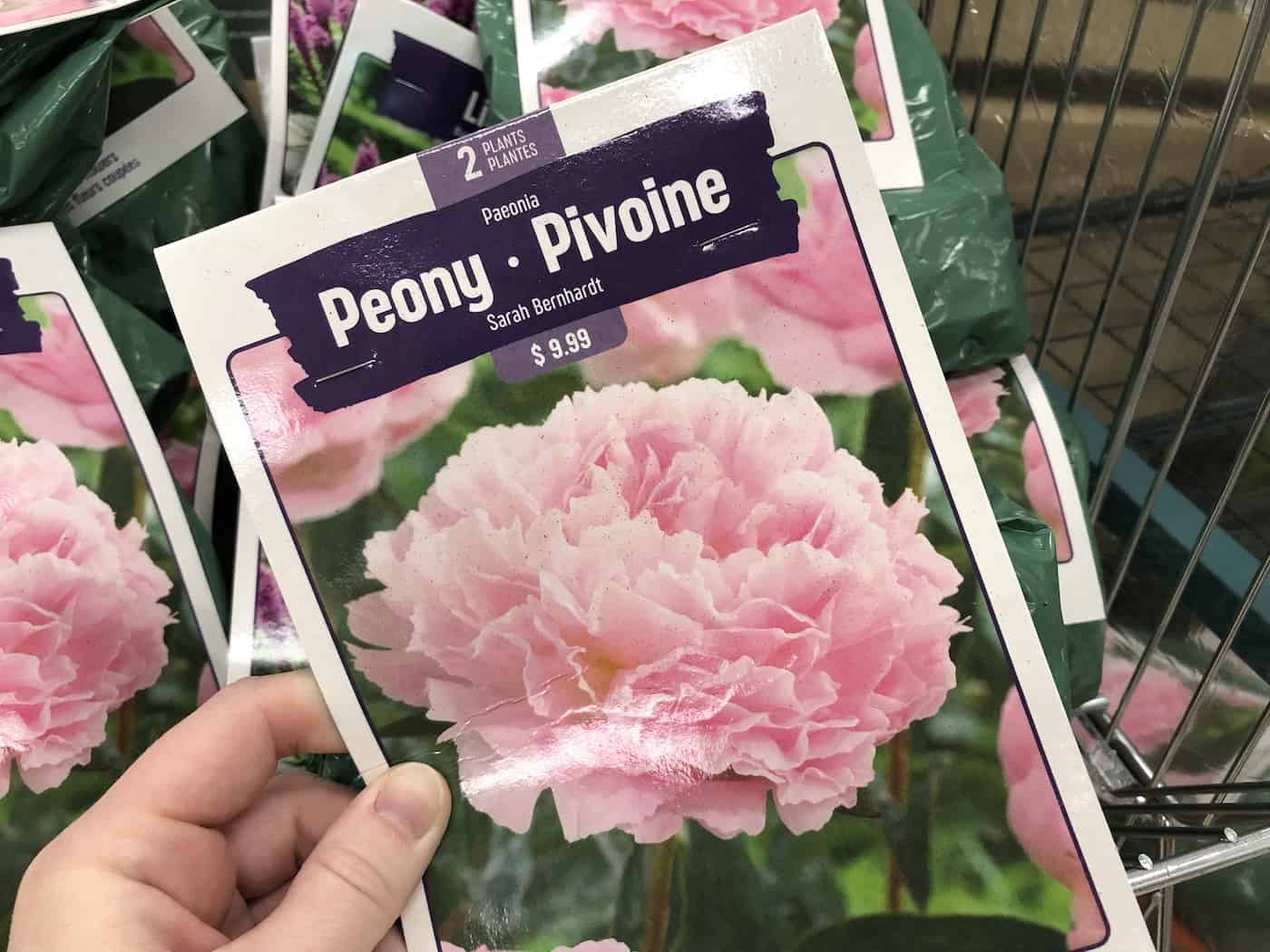
Classification
Sarah Bernhardt peonies (Paeonia lactiflora ‘Sarah Bernhardt’) are herbaceous perennial plants with full double-type peony flowers that bloom late in the peony growing season (typically early summer). Full double peonies like Sarah Bernhardt’s are known for their voluminous layers of petals. In this flower type, all stamens and carpels are transformed into petals.
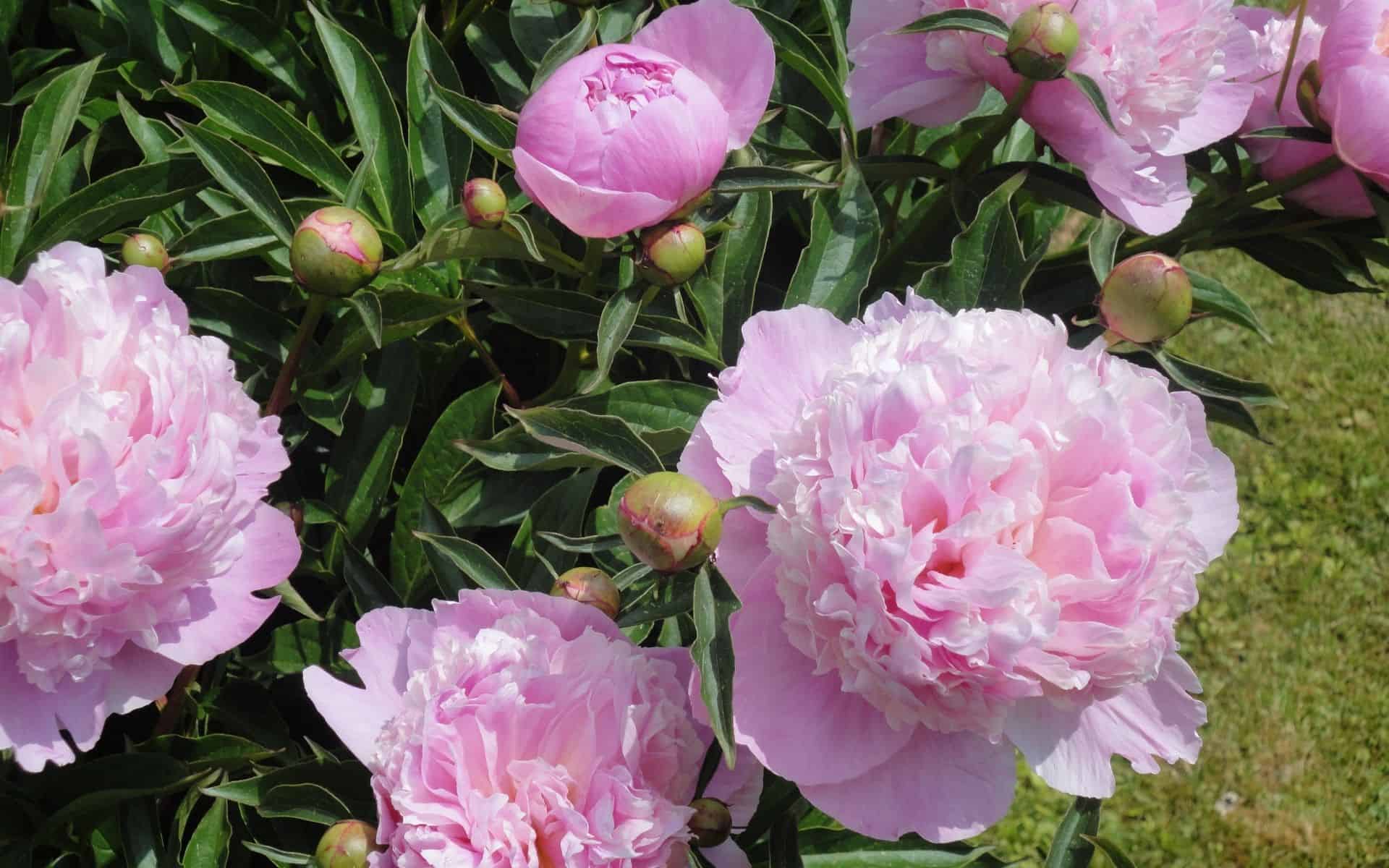
Planting new peonies
Peonies are hardy from zones 2-8 and are easiest to grow in hardiness zones 4-7. They are simple plants to grow as long as you plant them in a suitable location and at the proper depth.
Plant the peonies 3-4 feet apart from each other so that they have enough living space. These plants grow to 34-36″ tall and 24-36″ wide. Plant them far away from trees and shrubs, which will compete with them for nutrients.
In your garden, you’ll usually want to plant them somewhere they can get full sun all day. However, if you have an especially hot early summer in your area, you might want to plant your peony somewhere where it can get at least partial afternoon shade.
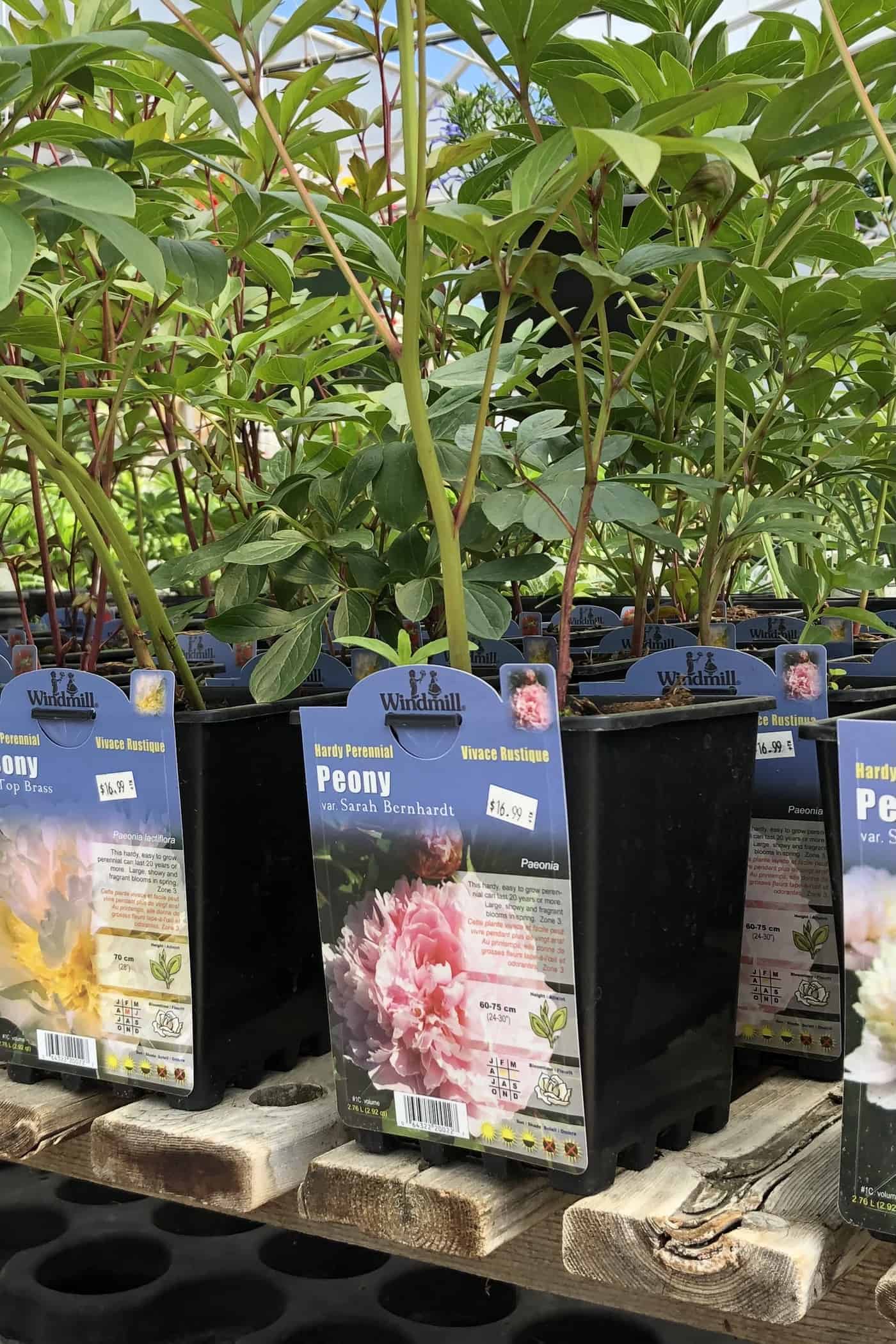
When planting bare-root tubers, dig a hole that is about two feet deep, then create a mound of soil in the middle of the hole and place the root on top of it with the eyes facing up. The eyes should be about 1 inch below the soil surface. Peonies with eyes planted deeper than 2 inches may not bloom at all.
Potted peonies should be planted so the elevation of the potting mix around the stems lines up with the soil surrounding the planting hole.
Growing peony plants in the garden
It is generally a good idea to provide some help for the weak stems of Sarah Bernhardt plants. There are several ways to do this, from binding the stem to a straight stick to using three-legged Peony rings. Tomato cages can also work.
Remove and cut flower blooms from the plant as soon as they stop blossoming. Cut the stems back to behind the plant’s leaves so that they don’t stick out. Cut the plant back in the fall to decrease any overwintering diseases.
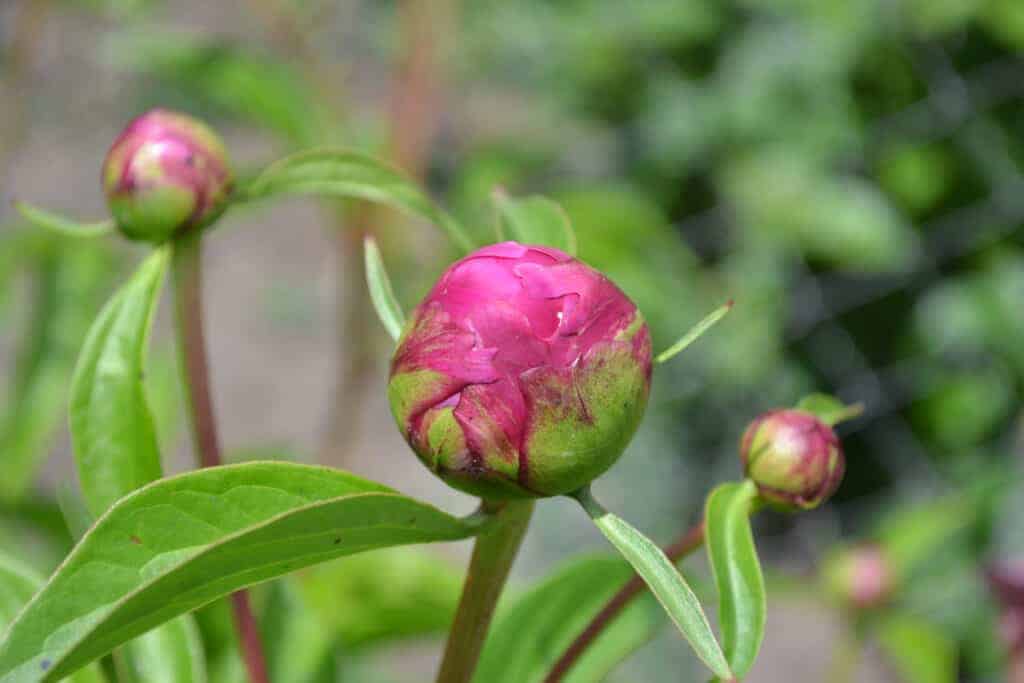
Pests and diseases
Peonies are fairly pest-resistant for several reasons. They have a symbiotic relationship with some kinds of ants, where the ants take sugary nectar from the plant to protect it from aphids and other insectoid pests. They are also resistant to deer and rabbits, making them ideal if you have many of them near your home.
There are a few diseases, however, that can afflict peonies. Most are fungal-based, and ensuring that the plant gets enough light and warmth is the best way to avoid them.
If your peonies do end up sick and you need to remove a few of them, then be sure to fully remove all of the clipped or removed peony material from the garden and either burn it or throw it away. Dead plant parts can easily spread disease to the rest of your garden, especially for plants that match the cultivar of the dead plants.
